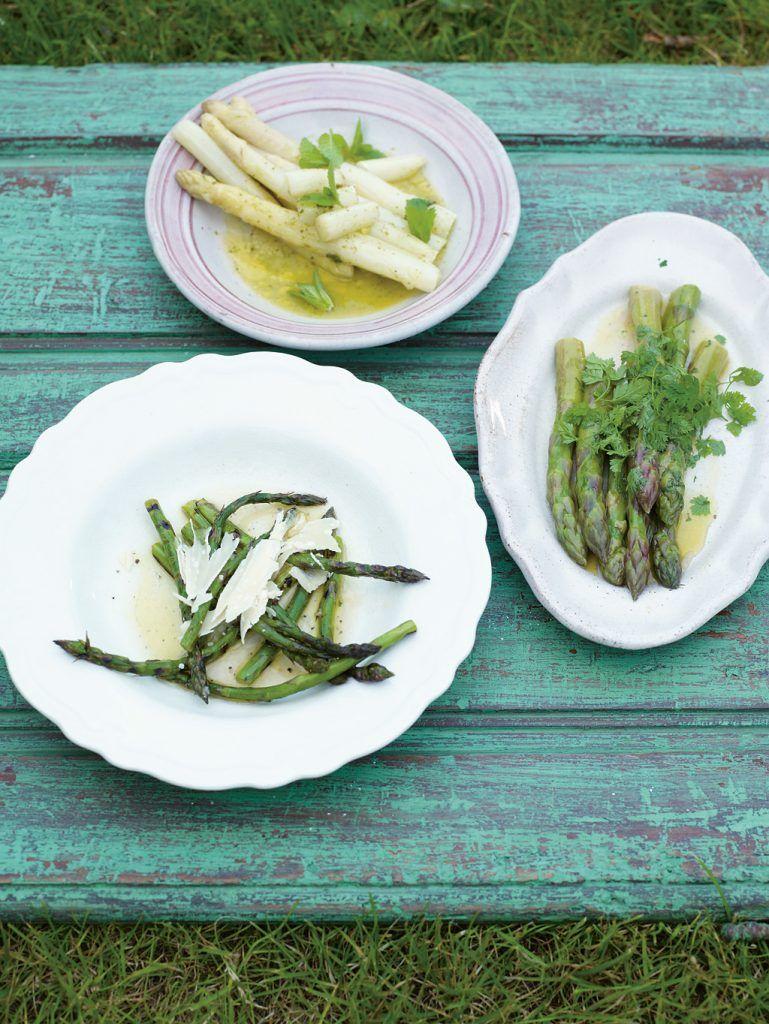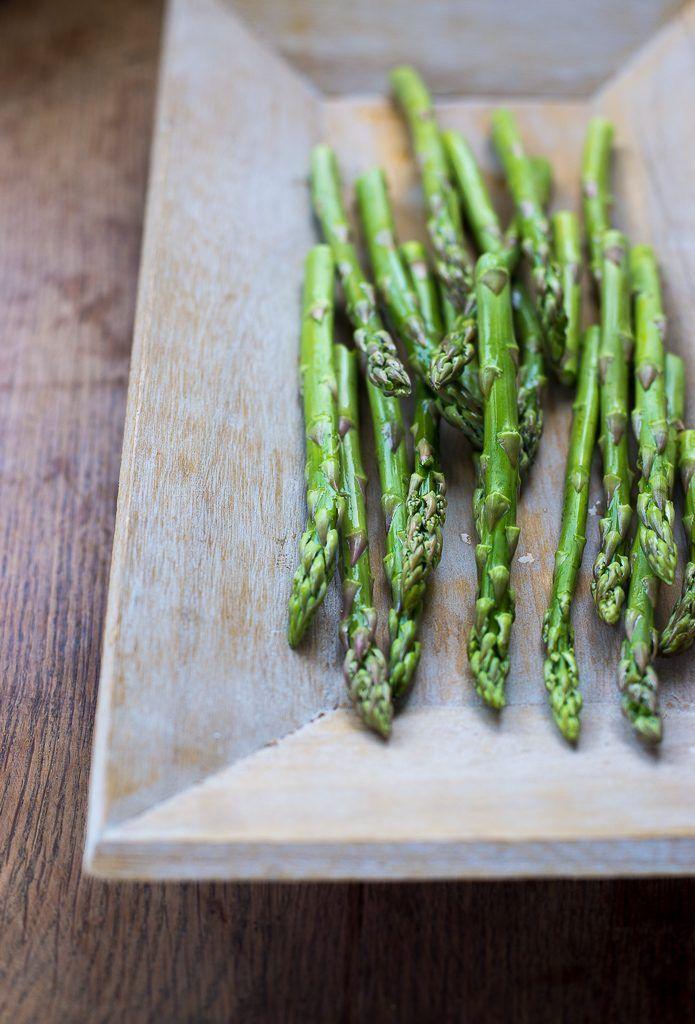Spring is here, and with it comes the eagerly awaited asparagus season in the UK. While you can easily find asparagus at the supermarket, there’s something special about seeking out fresh green spears from a local food market or even straight from the field if you have the chance. Once you have these vibrant spears in your hands, the question becomes: how can you make the most delicious dishes with them? Well, fret not! Here’s everything you need to know about cooking asparagus.
Blanching: A Delicate Approach
One popular method for cooking asparagus is blanching. To do this, you can tie the spears into little bundles, which makes them easier to remove from the water. Simply drop these bundles or individual spears into boiling water, cover, and cook for three to five minutes, depending on their thickness. Once cooked, drain them and plunge them into ice-cold water or serve them straight away. One elegant starter idea from Jamie Oliver involves tender asparagus served with a green dressing, soft boiled eggs, and crispy homemade bacon croutons. This dish pairs perfectly with a glass of cold sparkling cider.
Steaming: Keep it Light
For a lighter cooking method, try steaming your asparagus. Place the spears in a steaming basket with a little water underneath, cover, and cook for three minutes. Steaming helps retain the natural freshness and crunchiness of the asparagus.
Griddling: Embrace the Grill Marks
Asparagus loves being griddled in a pan. Simply drizzle them with a little olive oil and turn them occasionally. Alternatively, you can try Jamie Oliver’s recipe for griddled asparagus with olive oil, lemon, and Parmesan. The grilling process brings out a smoky flavor that pairs beautifully with the tanginess of lemon and the richness of Parmesan.

Roasting: Unleash the Richness
Roasting asparagus intensifies its flavors and creates a lovely caramelized taste. Preheat your oven to 220°C, gas mark 7, line a tray with foil or baking paper, lay the asparagus spears onto the tray, drizzle with olive oil, and season with salt and pepper. For an extra zing, you can also add a couple of fresh cloves of garlic and a little grating of lemon zest. Roast for ten minutes. The roasted asparagus can be stirred into a risotto or a creamy pasta dish. Alternatively, if you decide to serve the roasted asparagus on its own, you can try Jamie Oliver’s pancetta, anchovy, and cherry tomato version for a burst of flavors.

Stir-Frying: An Oriental Twist
Asparagus is a popular ingredient in Asian cooking, particularly in salads or stir-fries. It only needs a minute or so in a hot wok, so remember to add it towards the end of cooking your dish. A splash of soy sauce and a sprinkle of sesame seeds work wonders in bringing out its Asian flavors.
Raw: A Fresh Alternative
Believe it or not, asparagus can be eaten raw too! It pairs wonderfully with feta cheese and radishes, or you can add a spear or two to a fresh green smoothie. A raw spring salad, featuring raw asparagus, radishes, baby courgettes, and fragrant fresh herbs, is a delightful option for a light side dish or starter.

Accompaniments: Enhancing the Flavors
When it comes to enhancing the flavor of asparagus, olive oil or a little butter are perfect accompaniments. Don’t forget to season with a pinch of sea salt and fresh black pepper. Freshly-shaved Parmesan or crumbled feta cheese are excellent partners, as well as goat’s cheese or strong Cheddar. For a show-stopping centerpiece, try making a British asparagus Westcombe cheddar tart for your spring picnic or lunch. You can also explore a simple Polish recipe called Asparagus á la Polonaise, which involves cooking the asparagus in seasoned water and then topping it with butter and fresh breadcrumbs lightly browned in a pan.
Asparagus and eggs are always a timeless combination during the spring season. Dip fresh asparagus spears into a softly boiled egg or make asparagus soup topped with a poached egg and a drizzle of olive oil. It’s a silky smooth delight that can be enjoyed hot or cold.

The Perfect Hollandaise Sauce
No article on asparagus would be complete without mentioning hollandaise sauce. This classic French sauce, made with melted butter, fresh egg yolks, lemon juice, and a touch of mustard or cayenne, is a heavenly match for asparagus. The creamy and tangy flavors of hollandaise sauce bring out the best in asparagus.

How to Prepare Asparagus
Before cooking asparagus, it’s important to note that thin spears tend to be younger and have a milder flavor, while thicker spears have a more pronounced taste. Additionally, try to use your asparagus as soon as possible. If you’re not using it right away, a handy tip is to store it standing up in a jug of water in the fridge. For more information on storing asparagus, its seasonal availability, and other tips, head to Vegepedia.
Remember, cooking asparagus is a delightful culinary adventure that offers a wide range of flavors and cooking techniques. So, embrace the asparagus season and let your creativity shine in the kitchen!



